The AMD Ryzen Threadripper 1950X and 1920X Review: CPUs on Steroids
by Ian Cutress on August 10, 2017 9:00 AM ESTCPU Rendering Tests
Rendering tests are a long-time favorite of reviewers and benchmarkers, as the code used by rendering packages is usually highly optimized to squeeze every little bit of performance out. Sometimes rendering programs end up being heavily memory dependent as well - when you have that many threads flying about with a ton of data, having low latency memory can be key to everything. Here we take a few of the usual rendering packages under Windows 10, as well as a few new interesting benchmarks.
All of our benchmark results can also be found in our benchmark engine, Bench.
Corona 1.3: link
Corona is a standalone package designed to assist software like 3ds Max and Maya with photorealism via ray tracing. It's simple - shoot rays, get pixels. OK, it's more complicated than that, but the benchmark renders a fixed scene six times and offers results in terms of time and rays per second. The official benchmark tables list user submitted results in terms of time, however I feel rays per second is a better metric (in general, scores where higher is better seem to be easier to explain anyway). Corona likes to pile on the threads, so the results end up being very staggered based on thread count.
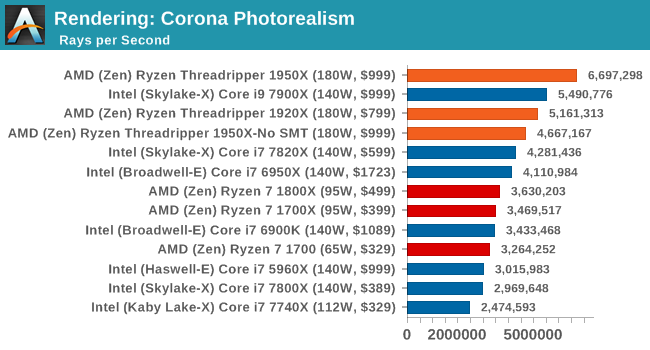
Corona loves threads.
Blender 2.78: link
For a render that has been around for what seems like ages, Blender is still a highly popular tool. We managed to wrap up a standard workload into the February 5 nightly build of Blender and measure the time it takes to render the first frame of the scene. Being one of the bigger open source tools out there, it means both AMD and Intel work actively to help improve the codebase, for better or for worse on their own/each other's microarchitecture.
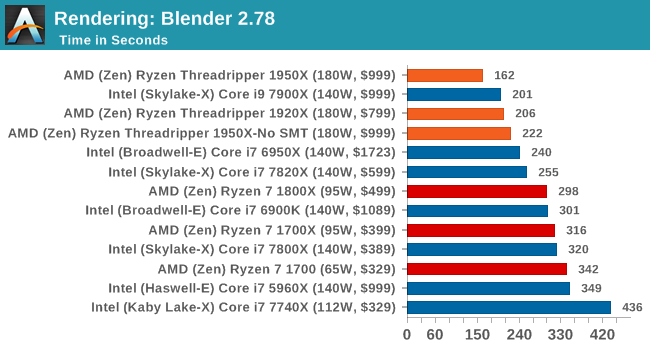
Blender loves threads and memory bandwidth.
LuxMark v3.1: Link
As a synthetic, LuxMark might come across as somewhat arbitrary as a renderer, given that it's mainly used to test GPUs, but it does offer both an OpenCL and a standard C++ mode. In this instance, aside from seeing the comparison in each coding mode for cores and IPC, we also get to see the difference in performance moving from a C++ based code-stack to an OpenCL one with a CPU as the main host.
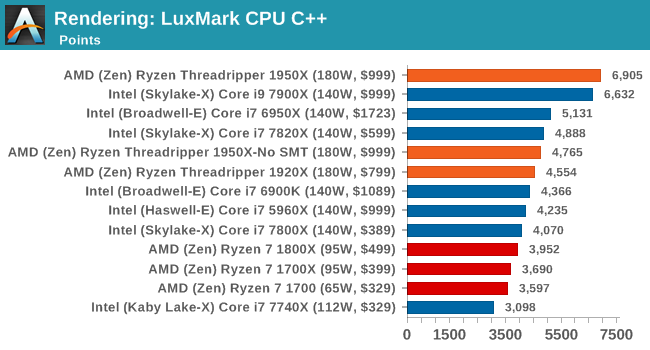
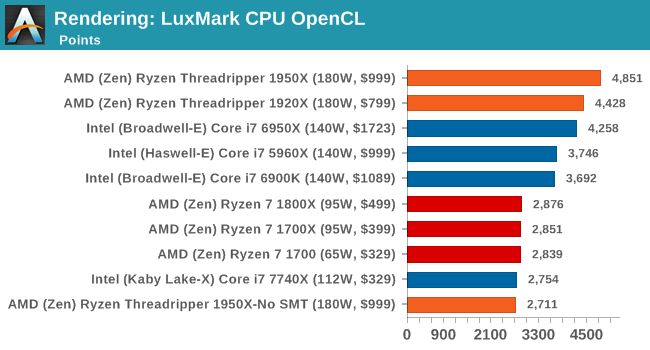
Like Blender, LuxMark is all about the thread count. Ray tracing is very nearly a textbook case for easy multi-threaded scaling. Though it's interesting just how close the 10-core Core i9-7900X gets in the CPU (C++) test despite a significant core count disadvantage, likely due to a combination of higher IPC and clockspeeds.
POV-Ray 3.7.1b4: link
Another regular benchmark in most suites, POV-Ray is another ray-tracer but has been around for many years. It just so happens that during the run up to AMD's Ryzen launch, the code base started to get active again with developers making changes to the code and pushing out updates. Our version and benchmarking started just before that was happening, but given time we will see where the POV-Ray code ends up and adjust in due course.
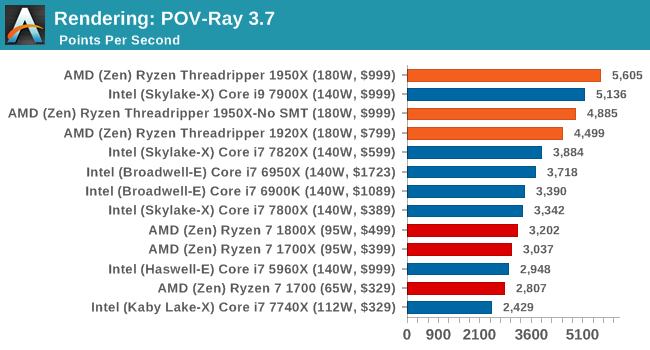
Similar to LuxMark, POV-Ray also wins on account of threads.
Cinebench R15: link
The latest version of CineBench has also become one of those 'used everywhere' benchmarks, particularly as an indicator of single thread performance. High IPC and high frequency gives performance in ST, whereas having good scaling and many cores is where the MT test wins out.
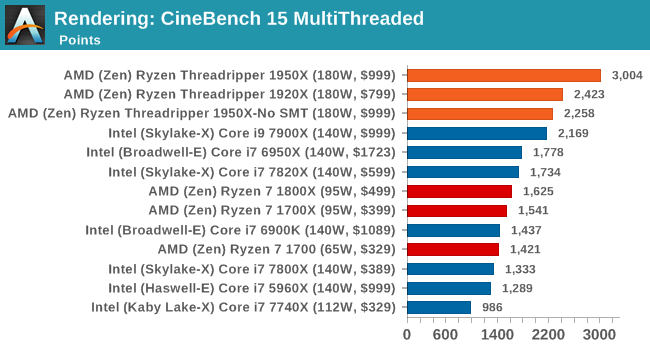
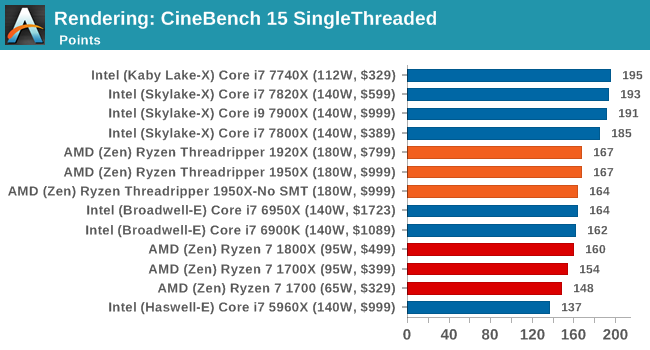
Intel recently announced that its new 18-core chip scores 3200 on Cinebench R15. That would be an extra 6.7% performance over the Threadripper 1950X for 2x the cost.










347 Comments
View All Comments
Ian Cutress - Thursday, August 10, 2017 - link
We ran with both and give the data for both. Gaming Mode is not default, and it may surprise you just how many systems are still run at default settings.mapesdhs - Thursday, August 10, 2017 - link
Just a thought, might it be possible for AMD to include logic in the design which can tell when it's doing something would probably run better in the other mode, and if so notify the user of this?zepi - Thursday, August 10, 2017 - link
Which 7-zip version are you actually using? Do you really run version 9.2 as stated in the article?Latest stable should be something like 16.x and 17.x's are also available.
zepi - Thursday, August 10, 2017 - link
Your numbers look somewhat different compared to some sites that have been using 17.x versions.DanNeely - Thursday, August 10, 2017 - link
Keeping the version constant means you can compare against a huge backlog of old data without having to rerun anything and having to drop any systems you can't get working or were only loaners.Alexey291 - Thursday, August 10, 2017 - link
Yes and also means that the results are useless.tamalero - Thursday, August 10, 2017 - link
Agree. Its like running a benchmark suit that cant handle more than 8 threads.. because "back in the days" there were only dual core processors.Johan Steyn - Thursday, August 10, 2017 - link
Its called slanted journalism, just another example.zepi - Friday, August 11, 2017 - link
Exactly. We don't test GPU's with Quake 2 only to have comparable benchmark results against Voodoo 3.And almost no-one running 7zip today (be it on Core 2 quad OR Core i9) won't be running these ancient versions. Results on those versions are just meaningless in todays environment.
zepi - Friday, August 11, 2017 - link
princess and half a kingdom for functional edit.